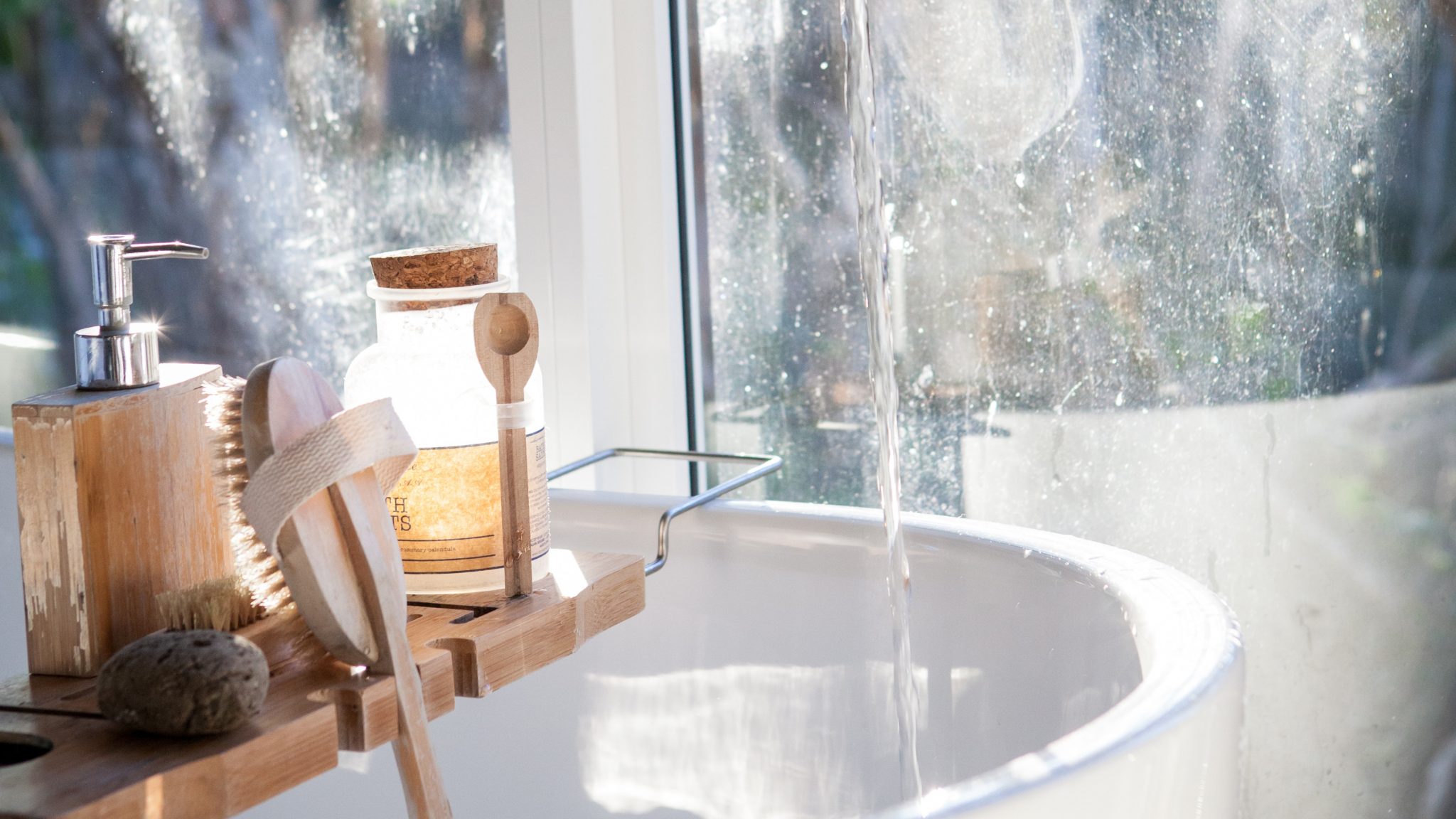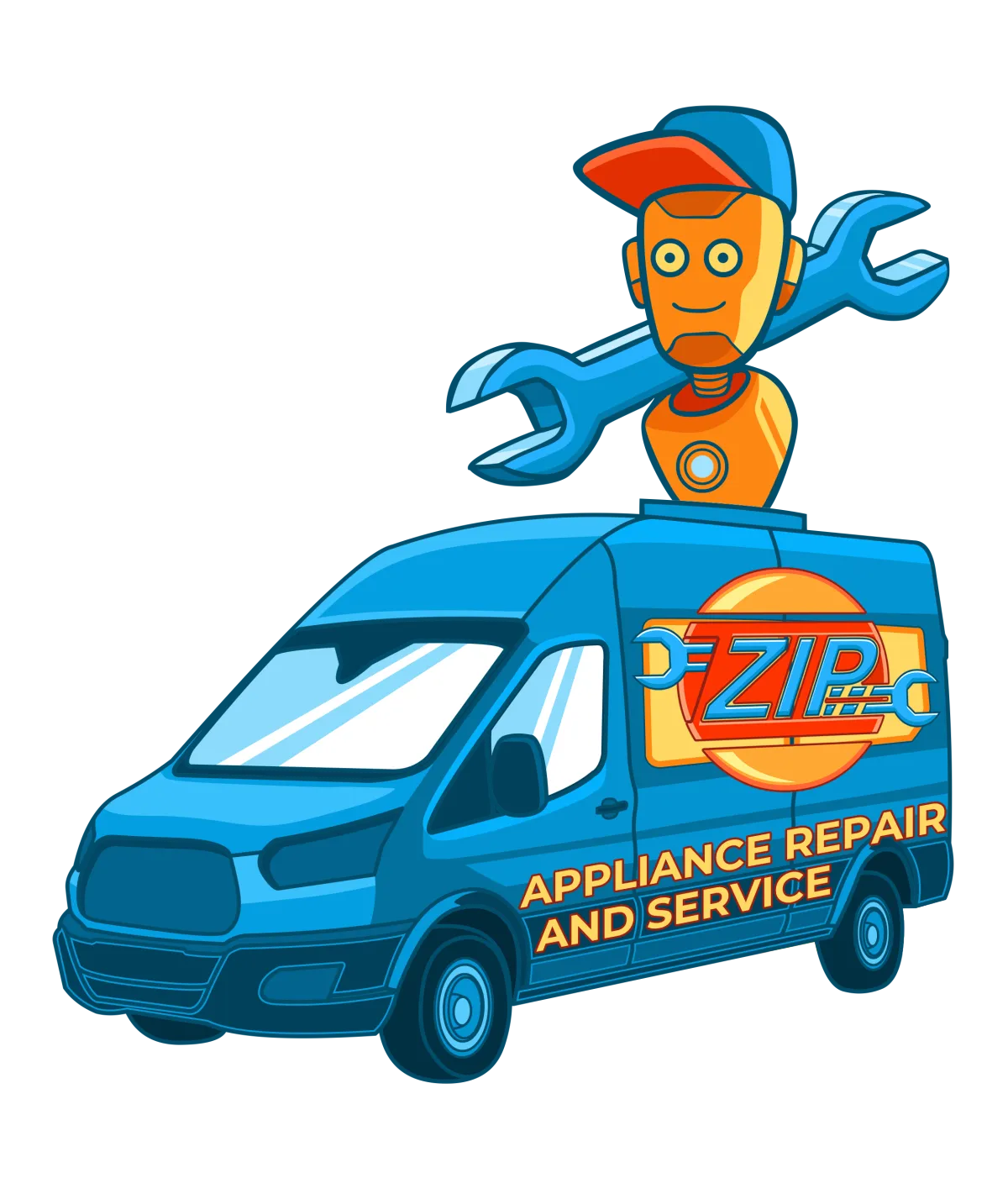Phone: (559) 272-4265
Appliance Repair Tips For Bakersfield, CA Residents

Discover Essential Water-Saving Tips for an Eco-Friendly Home
"Every drop counts! Discover essential water-saving tips for an eco-friendly home and join the journey toward a more sustainable and water-conscious lifestyle." - Appliance Boss
Introduction
Water is an invaluable resource, essential for life, ecosystems, and human activity. In an era where environmental awareness is paramount, understanding the importance of water conservation in an eco-friendly home becomes vital. Every drop saved contributes to a healthier planet and a more sustainable lifestyle.
Water waste is not merely a household concern; it resonates deeply with global environmental challenges. Excessive water use leads to depleted resources, higher utility bills, and strain on local ecosystems. By adopting water-saving measures, households can significantly reduce their environmental footprint while also reaping financial benefits.

Why Water-Saving Tips Matter
The environmental benefits of saving water are profound. When we conserve water, we decrease the energy required for pumping, heating, and treating water. This reduction translates into fewer greenhouse gas emissions, playing a crucial role in combating climate change. Moreover, conserving water helps to protect aquatic habitats, allowing ecosystems to thrive rather than suffer from over-extraction.
Every small step towards reducing water usage contributes to a sustainable future. In an age where resources are finite, the cumulative effect of individual actions can lead to substantial change. By embracing water-saving tips, households not only preserve a vital resource but also contribute to a global movement advocating for sustainability and responsible stewardship of the planet.
Assessing Your Current Water Usage
Understanding your current water usage is the first step toward conservation. Identifying high-water usage areas in your home can reveal opportunities for improvement. Common culprits include toilets, showerheads, and outdoor irrigation systems.
To track your water consumption, consider monitoring your water bill for trends or using a water meter to measure your daily usage. Simple steps, such as keeping a log of daily activities that require water, can help you pinpoint where you can cut back and implement water-saving strategies.
Indoor Water-Saving Tips
Implementing low-flow fixtures is an effective way to reduce water consumption indoors. Faucets, showerheads, and toilets designed to use less water without sacrificing performance can dramatically decrease usage.
Installing dual-flush toilets, which offer two flushing options for liquid and solid waste, can further enhance water efficiency. By adopting these fixtures, you can enjoy a modern bathroom while contributing to significant water savings.
Smart Water Usage in the Bathroom
Efficient showering habits can greatly reduce water waste. Aim for quicker showers, using a timer to limit your water exposure. Installing a low-flow showerhead can also help maintain a satisfying experience while using significantly less water.
Additionally, optimizing toilet usage for minimal waste is crucial. Avoid using the toilet as a wastebasket, and ensure your toilet is functioning properly to prevent leaks. Regular maintenance can help avoid unnecessary water loss.
Kitchen Water-Saving Strategies
In the kitchen, consider investing in water-efficient appliances, such as modern dishwashers and sinks. These appliances are designed to use less water while providing superior cleaning results.
When washing dishes by hand, adopt best practices to minimize water waste. Fill one basin with soapy water and another with rinse water to streamline the process, reducing the amount of water flowing down the drain.
Laundry Room Efficiency
Choosing energy-efficient washing machines can save both water and electricity. Front-loading washers typically use less water than traditional top-loaders while providing excellent cleaning results.
To maximize your laundry loads, always aim to wash full loads rather than smaller ones. This simple adjustment can lead to significant water savings over time.
Outdoor Water Conservation Techniques
Creating a drought-resistant garden is an excellent way to save water outdoors. Opt for native plants that require less water and are more resilient to local climate conditions. These plants not only thrive but also support local wildlife.
The importance of mulch cannot be overstated. Applying a layer of mulch around plants helps retain moisture, reducing the need for frequent watering. This practice not only conserves water but also improves soil health.
Rainwater Harvesting
Rainwater harvesting is an innovative way to utilize natural resources. This practice involves collecting rainwater from roofs and directing it to storage systems.
Setting up a rain barrel system for garden use is a simple yet effective method to harness rainwater. This collected water can be used for irrigation, reducing reliance on municipal water sources.
Irrigation and Lawn Care Tips
When it comes to lawn care, efficient irrigation systems are key. Drip irrigation systems deliver water directly to the plant roots, minimizing evaporation and runoff compared to traditional sprinkler systems.
Understanding when and how to water your lawn is equally important. Watering early in the morning or late in the evening reduces evaporation losses, ensuring your lawn receives the moisture it needs without excessive waste.
Seasonal Water-Saving Practices
Adjusting your water usage with changing seasons can lead to significant conservation. For instance, reduce watering in cooler months when evaporation rates are lower.
Winterizing your plumbing is also essential to prevent waste. Insulating pipes and ensuring they are drained before the cold weather sets in helps prevent leaks and water loss during freezing temperatures.
Monitoring and Adjusting Water Usage
Using technology to track water consumption is increasingly popular. Smart home devices can monitor water usage in real-time, providing insights into how much water you are consuming.
This data can help identify leaks or areas for improvement, allowing for more informed decisions about water use.
Common Myths About Water Usage
Debunking misconceptions about water-saving tips is vital for promoting better practices. For instance, many believe that water-saving fixtures sacrifice performance, but modern technology has proven this to be false.
Understanding the real impact of water-saving practices can motivate individuals to embrace conservation methods, leading to a more sustainable lifestyle.
DIY Water-Saving Solutions
Creative ideas for repurposing greywater can also contribute to conservation efforts. Collecting water from washing fruits and vegetables or showering can be reused for irrigation, providing a second life to otherwise wasted water.
Additionally, creating your own water-saving devices at home can be both fun and effective. Simple alterations, such as adding a brick to your toilet tank or using a bucket in the shower, can lead to measurable savings.
Community Engagement in Water Conservation
Getting involved in local water-saving initiatives is a fantastic way to contribute to community efforts. Many regions have programs that promote water conservation, and joining these initiatives can amplify your impact.
Sharing tips and resources with your community fosters a culture of sustainability, encouraging more households to adopt water-saving measures.
The Long-Term Benefits of Water Conservation
Implementing water-saving tips leads to reduced utility bills, providing immediate financial relief. Over time, these savings can accumulate, allowing for reinvestment in other eco-friendly home improvements.
Moreover, the broader impact on local ecosystems and water resources cannot be overlooked. By conserving water, households help maintain healthy waterways and support biodiversity.
Government Programs and Incentives
Exploring rebates for water-efficient appliances is an excellent way to make the transition to a more sustainable home more affordable. Many local and state governments offer financial incentives to encourage residents to invest in water-saving technologies.
Finding local resources for water conservation assistance can provide additional support, ensuring that everyone has access to the tools and knowledge needed to conserve water effectively.
Conclusion
In summary, discovering essential water-saving tips for an eco-friendly home is not just beneficial for the environment but also advantageous for your wallet. Every action counts, and each household has the power to make a difference. By adopting water-saving practices and engaging with your community, you can contribute to a sustainable future. Embrace the challenge and make water conservation a priority in your home today.

Discover Essential Water-Saving Tips for an Eco-Friendly Home
"Every drop counts! Discover essential water-saving tips for an eco-friendly home and join the journey toward a more sustainable and water-conscious lifestyle." - Appliance Boss
Introduction
Water is an invaluable resource, essential for life, ecosystems, and human activity. In an era where environmental awareness is paramount, understanding the importance of water conservation in an eco-friendly home becomes vital. Every drop saved contributes to a healthier planet and a more sustainable lifestyle.
Water waste is not merely a household concern; it resonates deeply with global environmental challenges. Excessive water use leads to depleted resources, higher utility bills, and strain on local ecosystems. By adopting water-saving measures, households can significantly reduce their environmental footprint while also reaping financial benefits.

Why Water-Saving Tips Matter
The environmental benefits of saving water are profound. When we conserve water, we decrease the energy required for pumping, heating, and treating water. This reduction translates into fewer greenhouse gas emissions, playing a crucial role in combating climate change. Moreover, conserving water helps to protect aquatic habitats, allowing ecosystems to thrive rather than suffer from over-extraction.
Every small step towards reducing water usage contributes to a sustainable future. In an age where resources are finite, the cumulative effect of individual actions can lead to substantial change. By embracing water-saving tips, households not only preserve a vital resource but also contribute to a global movement advocating for sustainability and responsible stewardship of the planet.
Assessing Your Current Water Usage
Understanding your current water usage is the first step toward conservation. Identifying high-water usage areas in your home can reveal opportunities for improvement. Common culprits include toilets, showerheads, and outdoor irrigation systems.
To track your water consumption, consider monitoring your water bill for trends or using a water meter to measure your daily usage. Simple steps, such as keeping a log of daily activities that require water, can help you pinpoint where you can cut back and implement water-saving strategies.
Indoor Water-Saving Tips
Implementing low-flow fixtures is an effective way to reduce water consumption indoors. Faucets, showerheads, and toilets designed to use less water without sacrificing performance can dramatically decrease usage.
Installing dual-flush toilets, which offer two flushing options for liquid and solid waste, can further enhance water efficiency. By adopting these fixtures, you can enjoy a modern bathroom while contributing to significant water savings.
Smart Water Usage in the Bathroom
Efficient showering habits can greatly reduce water waste. Aim for quicker showers, using a timer to limit your water exposure. Installing a low-flow showerhead can also help maintain a satisfying experience while using significantly less water.
Additionally, optimizing toilet usage for minimal waste is crucial. Avoid using the toilet as a wastebasket, and ensure your toilet is functioning properly to prevent leaks. Regular maintenance can help avoid unnecessary water loss.
Kitchen Water-Saving Strategies
In the kitchen, consider investing in water-efficient appliances, such as modern dishwashers and sinks. These appliances are designed to use less water while providing superior cleaning results.
When washing dishes by hand, adopt best practices to minimize water waste. Fill one basin with soapy water and another with rinse water to streamline the process, reducing the amount of water flowing down the drain.
Laundry Room Efficiency
Choosing energy-efficient washing machines can save both water and electricity. Front-loading washers typically use less water than traditional top-loaders while providing excellent cleaning results.
To maximize your laundry loads, always aim to wash full loads rather than smaller ones. This simple adjustment can lead to significant water savings over time.
Outdoor Water Conservation Techniques
Creating a drought-resistant garden is an excellent way to save water outdoors. Opt for native plants that require less water and are more resilient to local climate conditions. These plants not only thrive but also support local wildlife.
The importance of mulch cannot be overstated. Applying a layer of mulch around plants helps retain moisture, reducing the need for frequent watering. This practice not only conserves water but also improves soil health.
Rainwater Harvesting
Rainwater harvesting is an innovative way to utilize natural resources. This practice involves collecting rainwater from roofs and directing it to storage systems.
Setting up a rain barrel system for garden use is a simple yet effective method to harness rainwater. This collected water can be used for irrigation, reducing reliance on municipal water sources.
Irrigation and Lawn Care Tips
When it comes to lawn care, efficient irrigation systems are key. Drip irrigation systems deliver water directly to the plant roots, minimizing evaporation and runoff compared to traditional sprinkler systems.
Understanding when and how to water your lawn is equally important. Watering early in the morning or late in the evening reduces evaporation losses, ensuring your lawn receives the moisture it needs without excessive waste.
Seasonal Water-Saving Practices
Adjusting your water usage with changing seasons can lead to significant conservation. For instance, reduce watering in cooler months when evaporation rates are lower.
Winterizing your plumbing is also essential to prevent waste. Insulating pipes and ensuring they are drained before the cold weather sets in helps prevent leaks and water loss during freezing temperatures.
Monitoring and Adjusting Water Usage
Using technology to track water consumption is increasingly popular. Smart home devices can monitor water usage in real-time, providing insights into how much water you are consuming.
This data can help identify leaks or areas for improvement, allowing for more informed decisions about water use.
Common Myths About Water Usage
Debunking misconceptions about water-saving tips is vital for promoting better practices. For instance, many believe that water-saving fixtures sacrifice performance, but modern technology has proven this to be false.
Understanding the real impact of water-saving practices can motivate individuals to embrace conservation methods, leading to a more sustainable lifestyle.
DIY Water-Saving Solutions
Creative ideas for repurposing greywater can also contribute to conservation efforts. Collecting water from washing fruits and vegetables or showering can be reused for irrigation, providing a second life to otherwise wasted water.
Additionally, creating your own water-saving devices at home can be both fun and effective. Simple alterations, such as adding a brick to your toilet tank or using a bucket in the shower, can lead to measurable savings.
Community Engagement in Water Conservation
Getting involved in local water-saving initiatives is a fantastic way to contribute to community efforts. Many regions have programs that promote water conservation, and joining these initiatives can amplify your impact.
Sharing tips and resources with your community fosters a culture of sustainability, encouraging more households to adopt water-saving measures.
The Long-Term Benefits of Water Conservation
Implementing water-saving tips leads to reduced utility bills, providing immediate financial relief. Over time, these savings can accumulate, allowing for reinvestment in other eco-friendly home improvements.
Moreover, the broader impact on local ecosystems and water resources cannot be overlooked. By conserving water, households help maintain healthy waterways and support biodiversity.
Government Programs and Incentives
Exploring rebates for water-efficient appliances is an excellent way to make the transition to a more sustainable home more affordable. Many local and state governments offer financial incentives to encourage residents to invest in water-saving technologies.
Finding local resources for water conservation assistance can provide additional support, ensuring that everyone has access to the tools and knowledge needed to conserve water effectively.
Conclusion
In summary, discovering essential water-saving tips for an eco-friendly home is not just beneficial for the environment but also advantageous for your wallet. Every action counts, and each household has the power to make a difference. By adopting water-saving practices and engaging with your community, you can contribute to a sustainable future. Embrace the challenge and make water conservation a priority in your home today.
If your dryer has been giving you problems, contact Zip Appliance Repair & Service at (661) 387-2282

Appliance Repair In A Zip
If you need a dryer repair call our Team at (661) 387-2282, or visit our online scheduling page to request service.
Appliance Repair
Plumbing Repair Services
HAVE A QUESTION, CALL (661) 387-2282

Online Offers
Take advantage of our online discount offers - save time and money...

Residential & Commercial appliances
See what our company can do for you

Appliance Repair Tips
If your appliance is not working properly...

1405 Commercial Way ste 100
Bakersfield, CA 93309
Lic # 1116346
Equipment We Sevice
- A Call To Confirm Your Appointment Time
- A Email Detailing Your Assigned Technician
- Information Needed Before The Repair Can Be Started
- An Estimate Of Work To Be Done
© 2024 ZIP APPLIANCE REPAIR & SERVICE LLC








